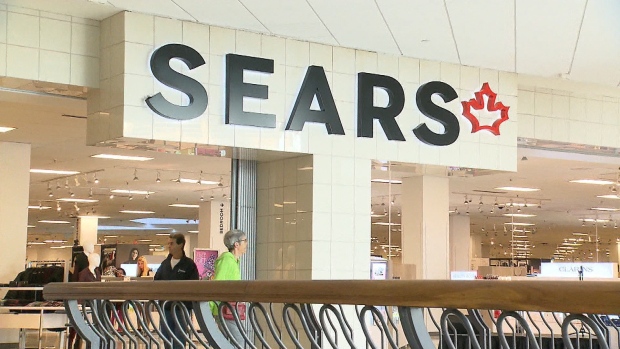Oct 6, 2017
What went wrong for Sears Canada: Experts weigh in

It could be a matter of days before Sears Canada learns its fate. The insolvent retailer’s court monitor said that’s the timeline Sears Canada has to work with to find a buyer or face liquidation. The company has fielded a number of bids so far, including from its executive chairman, Brandon Stranzl, who made another last ditch effort Tuesday with a revised offer. Below, experts weigh in on what caused the one-time retail giant to go from a shopping mall mainstay to facing liquidation.
Doug Stephens, founder, Retail Prophet
“Today, department store assortments pale in width to online stores and lack the depth of specialty players. They’ve become irrelevant. Moreover, Sears failed to move quickly enough to dominate in the online space and now the competitive distance between them and players like Amazon is overwhelming.”
“Consumers have moved to the extremes of value and left Sears abandoned in the middle of the market. Sears is neither off-price, nor is it high quality or a high-touch shopping experience.”
“Sears never made the move to reinvent for younger and more urban consumers. They’ve literally been following their traditional customers to the grave.”
David Zietsma, VP of management consulting and research, Jackman Reinvents and former VP of strategy and business improvement, Sears Canada
“Their issue was one of incremental thinking and what we call the Dominator’s Dilemma — their model in their heyday was too successful to easily let go of.”
“They 'adjusted' product offerings and prices when what they needed to do was step back from it all to reevaluate their place in the market and redefine what they stood for to customers.”
“The catalog business is a perfect example of this. They rode it profitably into the grave rather than making hard, bold choices to turn their massive catalog following and thousands of distribution outlets into a dominant online business.”
Jim Danahy, CEO, CustomerLab
“Nothing ‘went wrong’ because Sears’ demise was no accident. Some have called it a 10-year train wreck, but it was actually a deliberate, controlled dismemberment of the company since it was acquired by the current ownership group.”
“Management has acted consistently to siphon-off value by selling Sears in pieces rather than investing in the financial and human capital that HBC, Walmart and others were putting in to their operations to succeed.”
“Specifically, their pattern began immediately after the acquisition with share buy-backs rather than re-investment of profits into retail fundamentals, and it expanded to include the sell-off of the company’s most productive real estate assets and brands over the ensuing years.”
“What may be the most remarkable feature of this sad story is how skillfully the owners used lame turnaround promises to keep the vultures at bay, and the cadaver alive throughout a decade-long harvest of limbs and vital organs at premium prices. The current death rattles are little more than spooning out the remaining bits of marrow.”
Brynn Winegard, principal, Winegard & Company
“Sears had/has a very expansive (and expensive!) footprint in bricks & mortar when the world was headed into digital retail — they needed to head into omnichannel sooner and more effectively.”
“Sears does do appliances well and are branded accordingly, but people typically buy these products max twice in a lifetime, so this as a niche is not adequate for driving foot traffic to bricks-n-mortar nor for 'cradle-to-grave' marketing and loyalty.”
“Every time they tried to innovate, they were perpetually late to the game.”
“Leadership changed hands too many times in the last seven years — this lack of consistency creates systemic and strategic inefficiencies and a workplace that doesn't have capacity for further change or innovation.”
Dale Jones, managing director, RetailDNA
“Its private label brands have lost that gold star rating that made them stand above the competition.”
“Unable to compete with the quality of Hudson’s Bay and the pricing of Walmart, Sears has floundered somewhere in the middle unsure of what they want to stand for.”
“Walking through a Sears store we quickly notice the demographic of seniors that shop the isles. Sears has been unable to attract younger shoppers. Ask a Millennial and you’ll get, 'That’s the store grandma shops at'.”
Comments have been edited and condensed.




